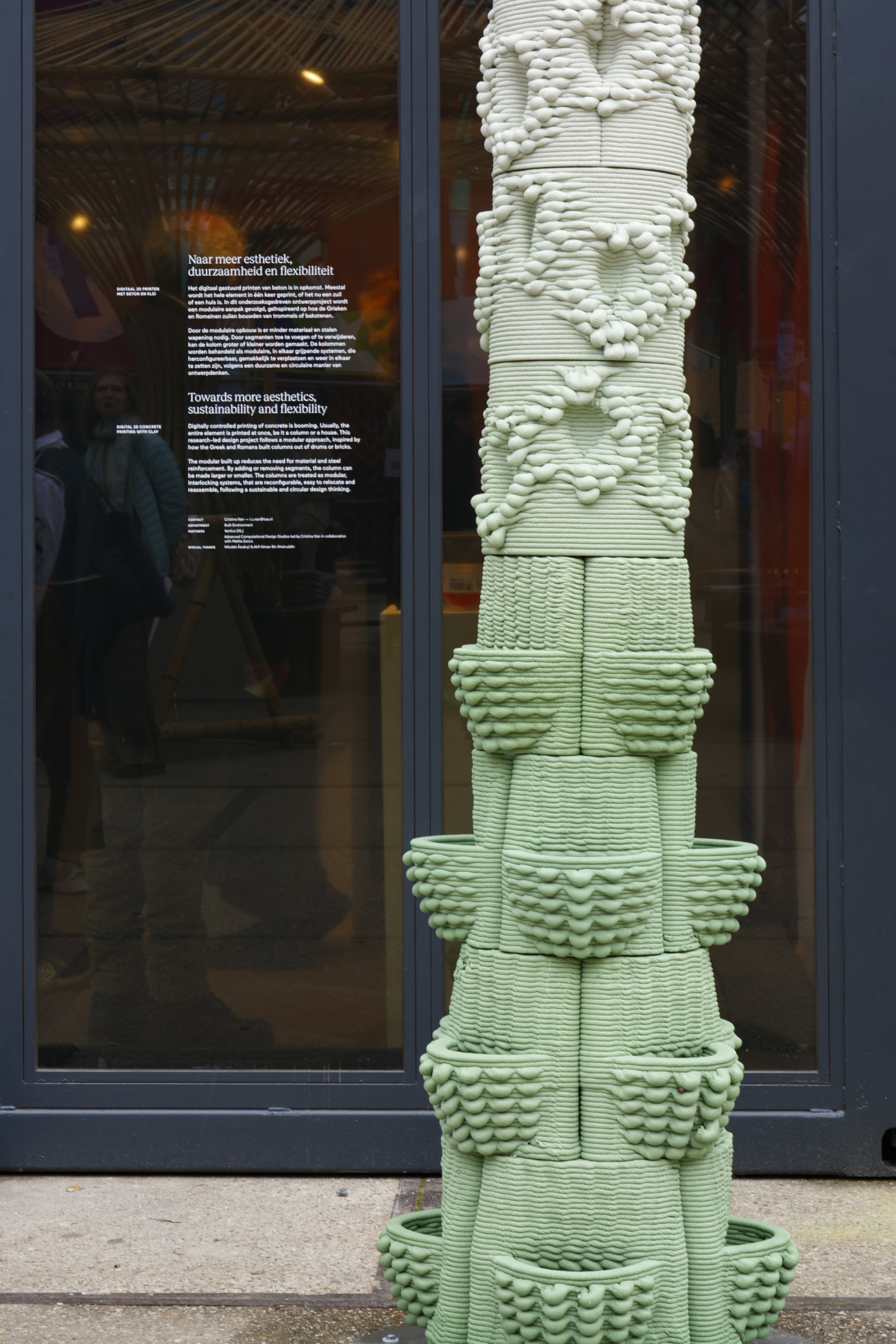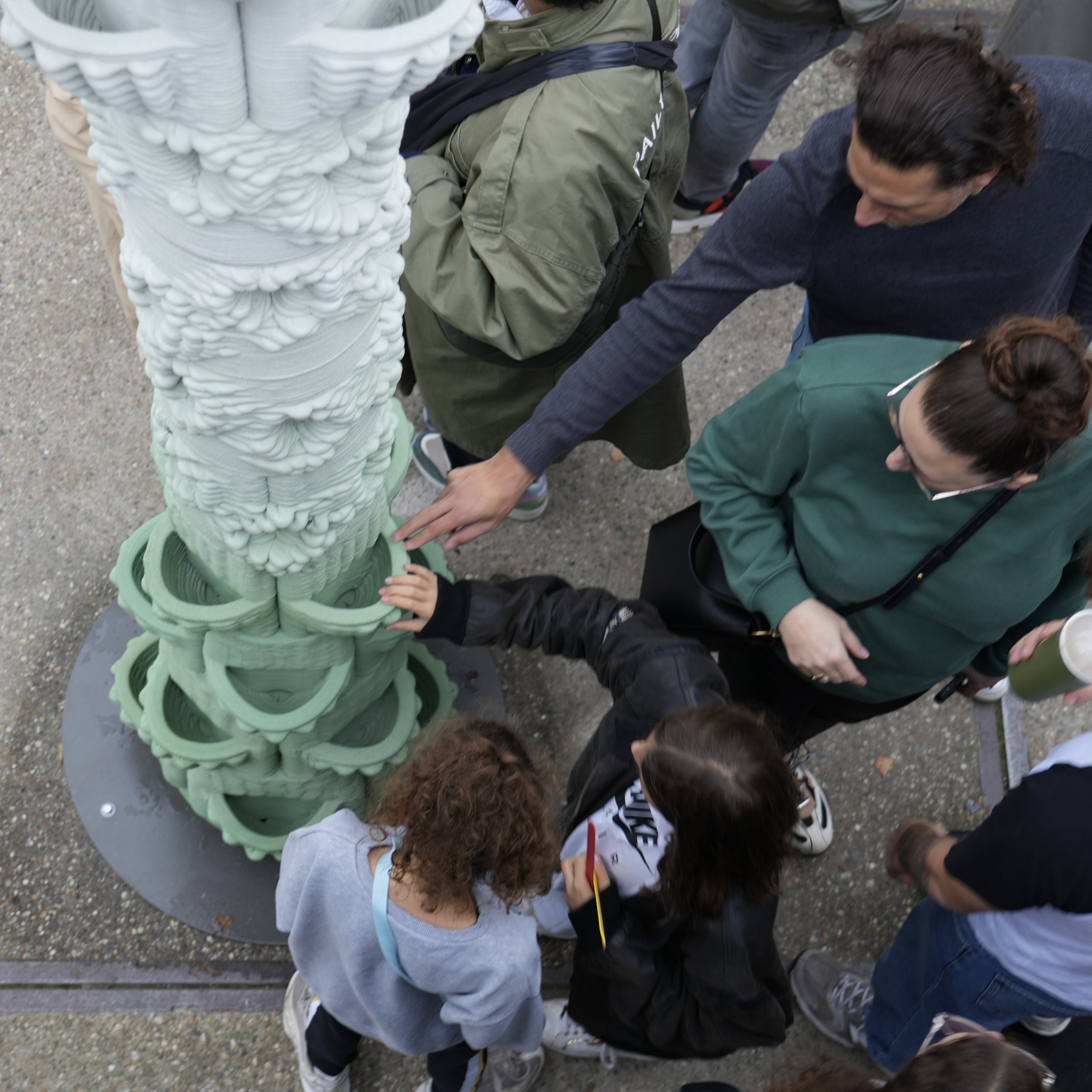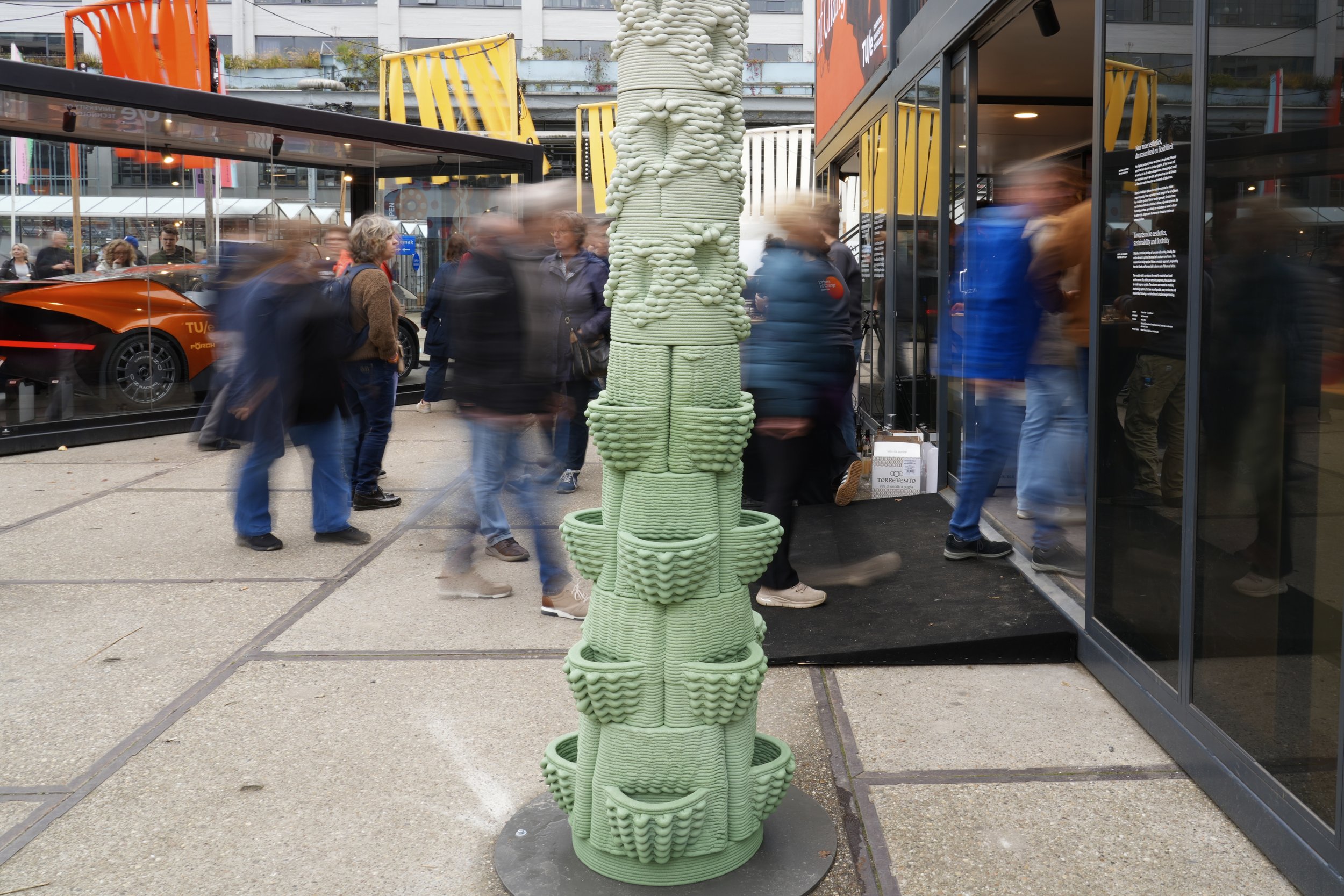
Bio-Integration & Modularity
3D Concrete Printing with Pigments
Dutch Design Week 2024
Digitally controlled printing of concrete is gaining extensive ground within architecture and construction. Usually the logic for additive manufacturing with concrete is one of monolithic printing of the entire element be it a column or a house. In this research-led design project we challenge this logic. We follow an approach of modularity for our columns inspired by the Greek and Roman understanding of a column as a system of drums or bricks and not as a monolith.
The series Computational Columns explores the potential of 3D concrete printing by creating innovative, tectonic columns that serve both constructive and expressive purposes, examining materials, fabrication techniques, and the conceptual design process based on a computational design logic. The column is treated as modular, interlocking systems, making them thus reconfigurable, easy to relocate and reassemble, following a system-based design thinking. Additionally, the modular approach significantly reduces the logistical complexity relating to transport and onsite handling. By adding or removing segments, the column can be made larger or smaller. In this research we take on a new tectonic logic imposed on 3D concrete printing, ornamentality is used as substrate for nature-inclusivity and biodiversity and the use of 3D concrete printing for modularity rather than the monolithic approach of printing in one go full-scale structures.
The articulation of the integrated pockets and the porosity of the three-dimensional patterns is meant to accommodate the growth of plants and the cohabitation of insects and birds. This is a more flexible way of employing concrete printing that opens up many future avenues by moving away from the monolithic mindset.
Team: Nikolett Ásványi, Mattia Zucco, Cristina Nan
Eindhoven University of Technology
3D Concrete Printing: Company Vertico — Kees Leemeijer & Orestis Pavlidis
Pigments: Lanxess
Exhibited at Dutch Design Week 2024









